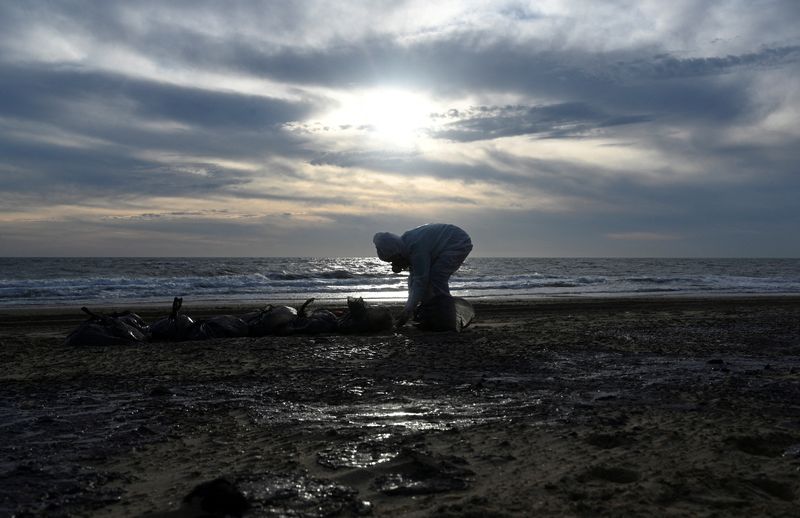Commodities
Russia clears thousands of tons of contaminated sand after Black Sea oil spill

(Reuters) – Russian rescue workers have cleared more than 86,000 metric tons of contaminated sand and earth on either side of the Kerch Strait following an oil spill in the Black Sea last month, the emergencies ministry said on Saturday.
The oil leaked from two ageing tankers that were hit by a storm on Dec. 15. One sank and the other ran aground.
More than 10,000 people have been working to shovel up viscous, foul-smelling fuel oil from sandy beaches in and around Anapa, a popular summer resort. Environmental groups have reported deaths of dolphins, porpoises and sea birds.
The emergencies ministry said on the Telegram messaging app that oil-tainted soil had been collected in the broader Kuban region in Russia and in Crimea, which Moscow annexed from Kyiv in 2014.
The ministry published video footage showing dozens of workers in protective suits loading bags of dirt onto diggers and others skimming dirt off the sand with shovels.
Russia’s transport ministry said this week experts had established that about 2,400 metric tons of oil products had spilled into the sea, a smaller spill than initially feared.

When the disaster struck, state media reported that the stricken tankers, both more than 50-years old, were carrying some 9,200 metric tons (62,000 barrels) of oil products in total.
The spill involved heavy M100-grade fuel oil that solidifies at a temperature of 25 degrees Celsius (77 degrees Fahrenheit) and, unlike other oil products, does not float to the surface but sinks to the bottom or remains suspended in the water column.
Commodities
Oil prices rise; U.S. crude inventories plunge, Russia-Ukraine truce eyed
Commodities
India’s Reliance to stop buying Venezuelan oil over US tariffs, sources say
Commodities
Oil prices climb on Venezuela supply worries

 Forex3 years ago
Forex3 years agoForex Today: the dollar is gaining strength amid gloomy sentiment at the start of the Fed’s week

 Forex3 years ago
Forex3 years agoUnbiased review of Pocket Option broker

 Forex3 years ago
Forex3 years agoDollar to pound sterling exchange rate today: Pound plummeted to its lowest since 1985

 Forex3 years ago
Forex3 years agoHow is the Australian dollar doing today?

 Cryptocurrency3 years ago
Cryptocurrency3 years agoWhat happened in the crypto market – current events today

 World3 years ago
World3 years agoWhy are modern video games an art form?

 Commodities3 years ago
Commodities3 years agoCopper continues to fall in price on expectations of lower demand in China

 Economy3 years ago
Economy3 years agoCrude oil tankers double in price due to EU anti-Russian sanctions























